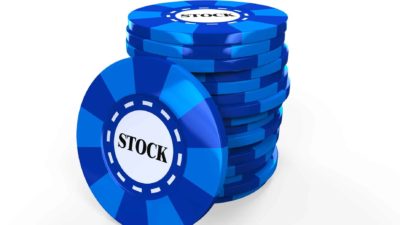A diversified and well-balanced ASX share portfolio can deliver investors an attractive source of passive income to their bank accounts.
The great thing about businesses is that they can generate profit and invest for growth, whilst also paying dividends.
Some investors are attracted to the largest ASX businesses for dividends, such as BHP Group Ltd (ASX: BHP) and Commonwealth Bank of Australia (ASX: CBA). I don't necessarily think that's the right strategy because it's likely to be difficult for them to deliver market-beating profit growth due to their huge size and the fact they already dominate their markets. CBA currently has a market capitalisation of $169 billion, according to the ASX.
If I were looking to build a world-class portfolio of ASX shares aimed at generating passive income starting with a $20,000 portfolio, this is what I'd look for:
Earnings growth potential
The more that our businesses can deliver capital and dividend growth themselves, the less we need to invest in the portfolio ourselves to get to large figures.
Just look at an example like Westpac Banking Corp (ASX: WBC) shares. Both the share price and dividends are materially lower than they were a decade ago. However, an ASX share like CSL Limited (ASX: CSL) has seen significant share price and dividend growth over the past decade thanks to sizeable profit growth.
Smaller businesses won't necessarily deliver more earnings growth than a large one – look at how well Apple and Microsoft have done over the last five years. However, I'd want to look for ASX dividend shares that could grow earnings/asset value significantly over the long term due to their tailwinds or business plans.
Companies that have a large addressable market give themselves lots of room for growth. For example, Xero Limited (ASX: XRO) has been looking to expand its customer base globally, though it's not an ASX dividend share.
With that in mind, I'd say names like Lovisa Holdings Ltd (ASX: LOV), Johns Lyng Group Ltd (ASX: JLG), and Bailador Technology Investments Ltd (ASX: BTI) are ones looking at expansion beyond Australia's shores.
Resilient in downturns
If I'm purposefully building an ASX share portfolio focused on passive income, I'd aim for a large proportion of it to be focused on businesses that provide good passive income even when economic conditions are tougher. What's the point of dividend stocks if the cash flow dries up when we need it most?
The type of industry the ASX share operates in can play a part in how defensive the earnings are.
I'm thinking about names in defensively-minded asset businesses such as Washington H. Soul Pattinson and Co. Ltd (ASX: SOL) and Brickworks Limited (ASX: BKW), funeral operator Propel Funeral Partners Ltd (ASX: PFP) and diversified companies Wesfarmers Ltd (ASX: WES) and Metcash Limited (ASX: MTS).
Certainly, dividends aren't guaranteed but I think the COVID-19 period showed how resilient the businesses I named can be.
Commitment to dividends
I like to look at businesses that already have a history of paying dividends to investors, or at least have been paying passive income as an important part of their strategy.
For example, Soul Pattinson says it wants to grow its dividend for investors (and has grown the payout every year since 2000). Metcash is committed to paying approximately 70% of underlying net profit after tax (NPAT) to shareholders
Healthcare company Sonic Healthcare Ltd (ASX: SHL) has a stated "progressive" dividend policy.
There are plenty of companies we can look at that have shown a commitment to paying dividends, even during trickier years like FY19 and FY20.
Growing a $20,000 ASX share portfolio
I'd recommend continuing to invest during an investment journey rather than just relying on an initial $20,000 investment. Indeed, just contributing $250 per month can make a big difference over the long term.
The ASX share market has delivered average returns per annum of approximately 10% over the ultra-long term, though the future may be worse (or better). So, let's assume that return in an example calculation.
Starting with an investment portfolio of $20,000, and investing $250 per month, that investment could grow into a portfolio of $512,000 after 25 years. If the portfolio had a dividend yield of 4.5%, that would make an annual passive income of $23,040. That sounds good to me!









